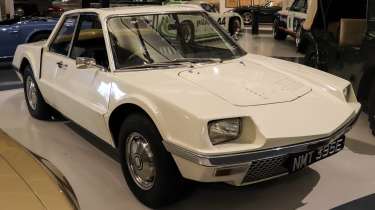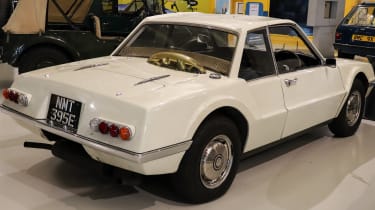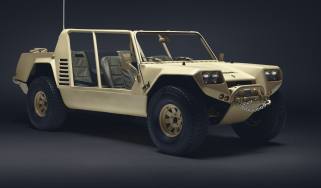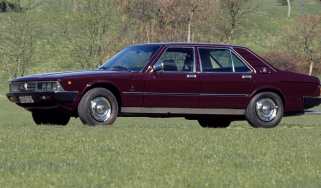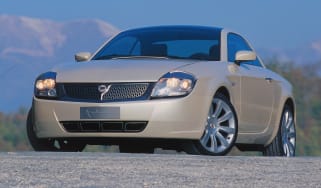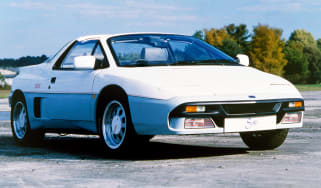Rover P6BS/P9 – Dead on arrival
This mid-engined, V8-powered three-seater could have been Rover’s first sports car, but a wary rival within the British Leyland empire ensured it would never see the light of day
In the post-war years Rover had a reputation for making dependable but starchy cars, like redoubtable maiden aunts made metal. By the 1960s, though, changes were afoot. The Rover-BRM racer burnt the company’s trad image in the white heat of its gas turbine engine, especially when it lasted the distance in the experimental class at Le Mans in ’63. Two years later the same car ran as an official entry with Graham Hill and Jackie Stewart driving, bagging 10th place. Rover’s big news of ’65, however, was the acquisition of a lightweight 3.5-litre V8 engine from Buick to put some pep in the step of the stately P5 four-door and bring welcome muscle to the smaller P6 saloon. Suddenly Rover carried a sportiness unthinkable ten years earlier. The only thing it didn’t have was an actual sports car.
In 1966 Rover management made a non-committal attempt to address this by asking chief engineer Spen King to draw up a cost-effective design with the new V8 at its core. It was quickly agreed that the car would be mid-engined with an ingenious powertrain arrangement in which the engine sat slightly to one side with the gearbox in parallel, connected by a chain drive. This brilliant piece of packaging liberated enough interior space for a third person to sit behind the front passenger in a car 18 inches shorter than a P6 saloon.
> Yamaha OX99-11 – Dead on arrival
A make-do-and-mend running prototype was ready to go by 1967, using various borrowed parts including P6 rear suspension and a Vauxhall Viva steering rack, all bolted to a butchered P6 base unit. Since the styling department was busy on other projects, engineer King designed the bodywork himself, a trick he would later repeat with great success for the first Range Rover.
Now codenamed P6BS (because it was P6-based, had a Buick engine, and was a sports car), the lone engineering car started testing at MIRA, but the project still lacked a firm commitment from management. In fact, the P6BS seemed to be regarded as more of an amusing experiment, something underlined in March 1968 when Rover’s masters at Leyland decided to show it off at the New York motor show, labelled as the Leyland Eight GE (Group Experimental). Just before the trip to America it had been lent to Motor magazine, which spoke in glowing terms about its abilities. Yet it was referred to throughout as the ‘Leyland Rover BS experimental car’, cementing the idea that this was little more than a ‘what if?’ exercise.
In 1969, however, the project gained a fresh lease of life, earning a new codename – P9 – and some proper time in the design studio, during which it became larger and more muscular-looking, though no less appealing. However, just as it seemed the Rover sports car might be getting somewhere, it was enveloped by a murky soup of politics, some of which could be traced to the 1968 merger of Rover’s owners with great rivals BMH to form British Leyland. Within the unmanageable mass of companies that resulted was Jaguar, and its founder William Lyons didn’t like the idea of an in-house sports car that could outpace an E-type.
Rover was already in development hell with the ultimately doomed P8 saloon. Fighting a rear-guard action to save a sports car it hadn’t the resources to complete was a battle too far, and the P9 died around the dawn of the ’70s. The sole P6BS prototype survives in the British Motor Museum as a sad reminder of what might have been.
